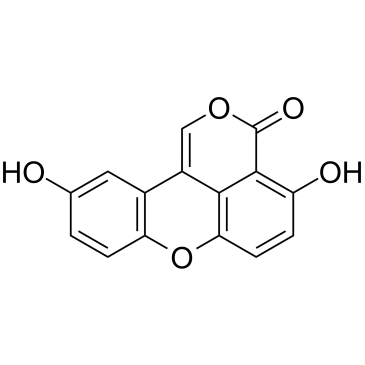1259330-61-4
| Name | Sparstolonin B |
|---|
| Description | Sparstolonin B acts as a selective TLR2 and TLR4 antagonist and selectively blocks TLR2- and TLR4-mediated inflammatory signaling. Sparstolonin B has anti-HIV and anticancer activities[1][2]. |
|---|---|
| Related Catalog | |
| Target |
TLR2 TLR4 HIV-1 |
| In Vitro | Sparstolonin B (1-20 µM; 2-4 days) inhibits cell growth and viability of neuroblastoma cells[3]. Sparstolonin B inhibits TLR ligand-induced cytokine expression in mouse macrophages. Sparstolonin B inhibits MyD88 recruitment to TLR4 and TLR2[1]. Sparstolonin B generates reactive oxygen species (ROS) in neuroblastoma cells. Sparstolonin B reduces expression of N-myc in neuroblastoma cells[3]. Cell Viability Assay[3] Cell Line: SH-SY5Y, IMR-32, NGP, SKNF-1 and SK-N-BE(2) cells Concentration: 1 µM, 5 µM, 10 µM or 20 µM Incubation Time: 2-4 days Result: Effectively and dose-dependently inhibits the viability of all neuroblastoma cell lines after 2 days (SH-SY5Y and IMR-32), 3 days (NGP cells) or 4 days (SKNF-1 and SK-N-BE(2) cells) treatment. |
| In Vivo | Sparstolonin B (100 μg/mouse; i.p.) suppresses LPS-provoked inflammation in mice[1]. Animal Model: 5-6-week-old male C57Bl/6 mice (body weight 18-20 g)[1] Dosage: 100 μg/mouse Administration: I.p. Result: Significantly lower TNFα and IL-1β expression levels in LPS-induced sepsis mouse model. |
| References |
| Molecular Formula | C15H8O5 |
|---|---|
| Molecular Weight | 268.22 |
| Storage condition | 2-8°C |
| Hazard Codes | Xi |
|---|
